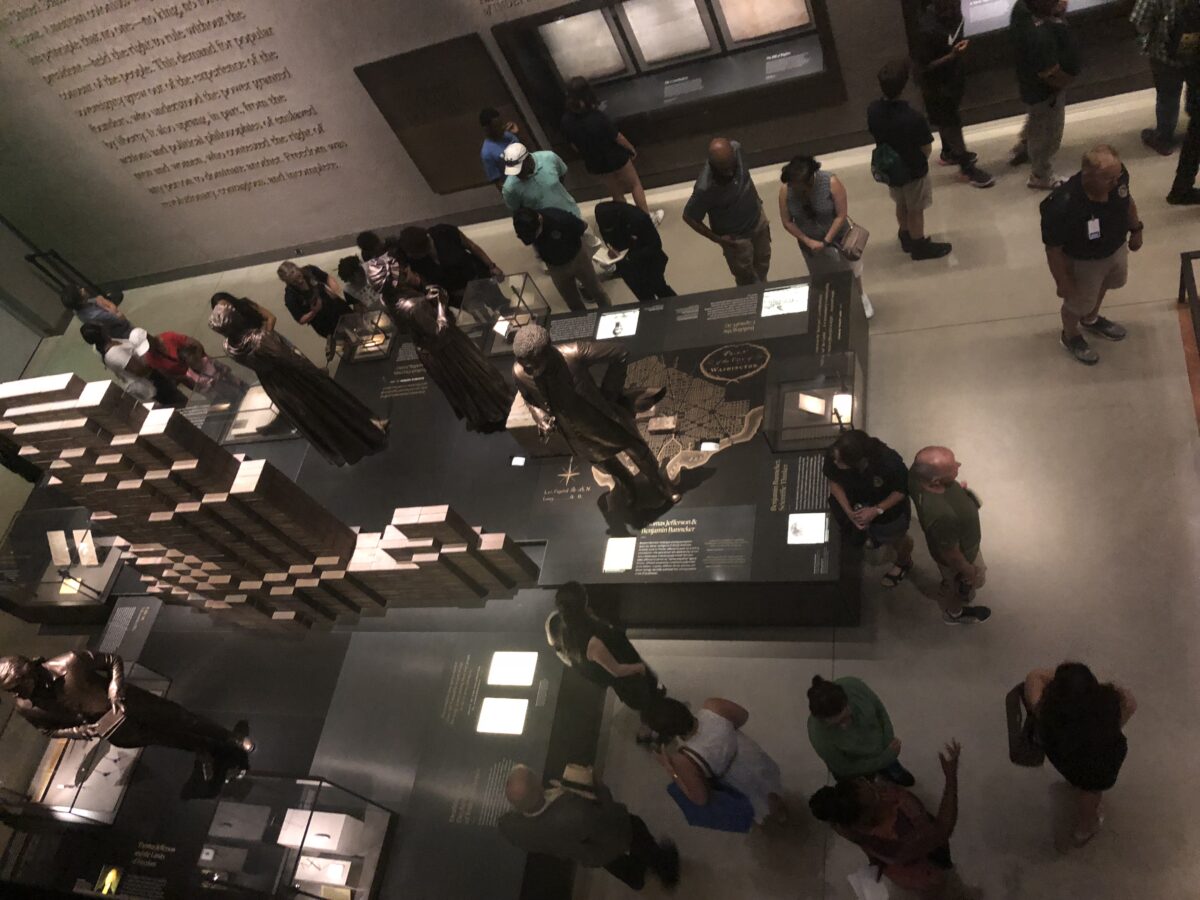I am ignorant of myself and the history of my skin. A glimpse, a clue, a hint of where and what I came from inflames my curiosity and hunger to know more about the origin of my diaspora. Before 2016, I knew nothing about myself. I only knew what the antiquated and impaired history books that provided basic, sugar-coated information that was reluctant to describe my ancestors journey to the “New World”- The Atlantic Slave Trade. Teachers forget to emphasize the wretched conditions Africans faced when coming to America: tightly packed at the bottom of a ship, deprived of sunlight with little air to breathe, deprived of the unalienable rights such to food and water. Many died on this miserable journey, but all we are taught is that Africans were simply cargo which can be moved at will by the slave traders.
Although not much of a historical monument, the National Museum of African American History and Culture engulfs so much of the diaspora and has enabled me to learn about my people. The museum represents the facet of the black narrative that my broken textbooks seemed to neglect. The museum displayed scenic portraits, videos, statues and much more that highlighted African-American struggles in overcoming oppression and celebrated African-American contributions to culture such as music, dance, and clothing that has been rebranded as “mainstream.” These are all aspects of African American culture that mainstream media fails to emphasize the roots, and therefore were all aspects of my own culture that had remained hidden from me for so long.
The impact the “NMAAHC” had on my life was a glimpse, clue, or hint that provided me just a bit more knowledge than what I was provided in history books. I learned that African Americans were the backbone of the American economy, from cultivating the fields to building the White House. African Americans have grown the seeds of America with our blood, sweat, and tears.
All of my life, I thought being black was a curse- I lived a façade that being white means living privileged. But, “NMAAHC” expressed to me that black is beautiful. The impact was more knowledge of myself and the history of my skin. Today, I recognize people like Frederick Douglass who led the abolition movement, to Bayard Rustin who was instrumental in the civil rights movement and there often overlooked contributions to the black narrative . And even today we see Colin Kaepernick leading a new fight, which is emblematic and uses themes of the rise from slavery.
The walk through the National Museum of African American History and Culture was a walk through the blood, sweat, and tears of all black people that have irrigated the soil of modern American Culture. This profound impact has rewarded me in ways that are unimaginable, yet its still overshadowed by the fact we aren’t truly free yet.
